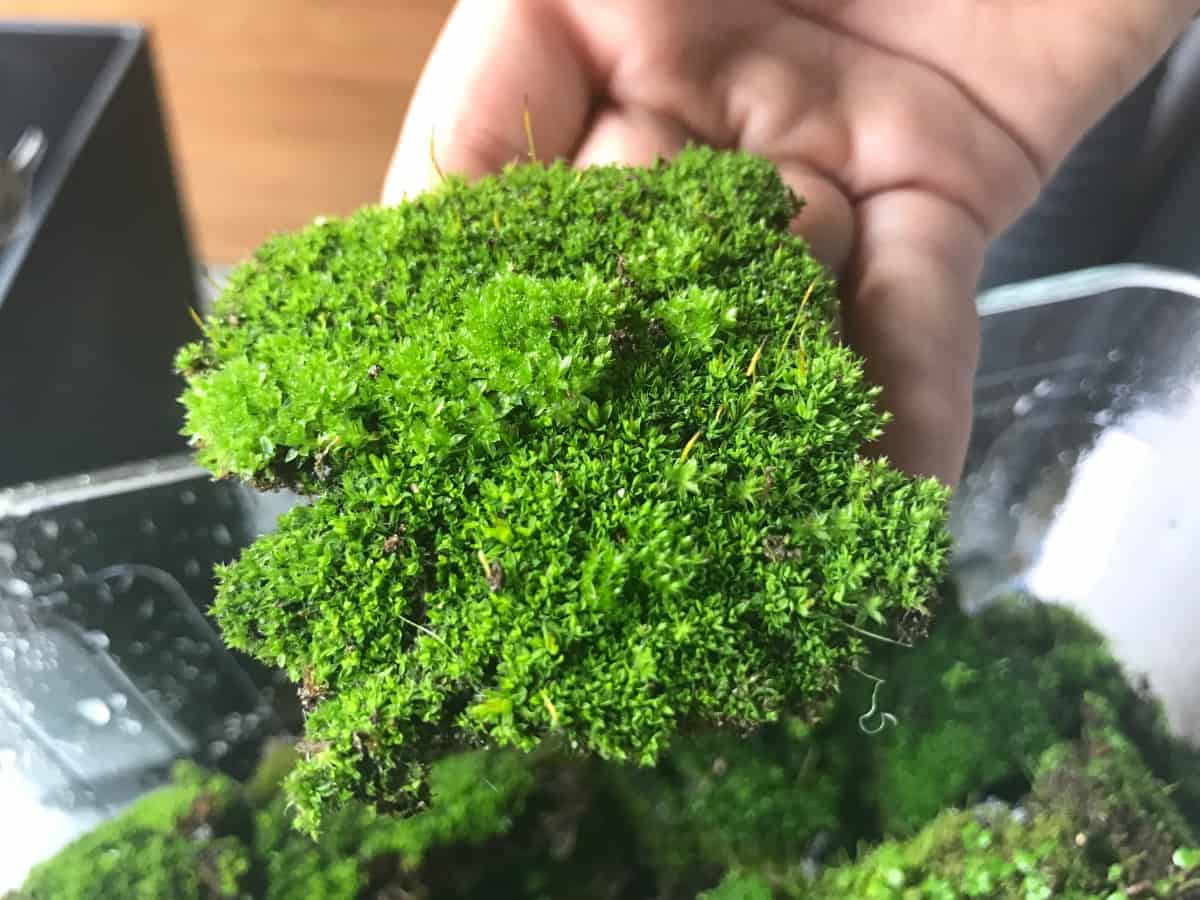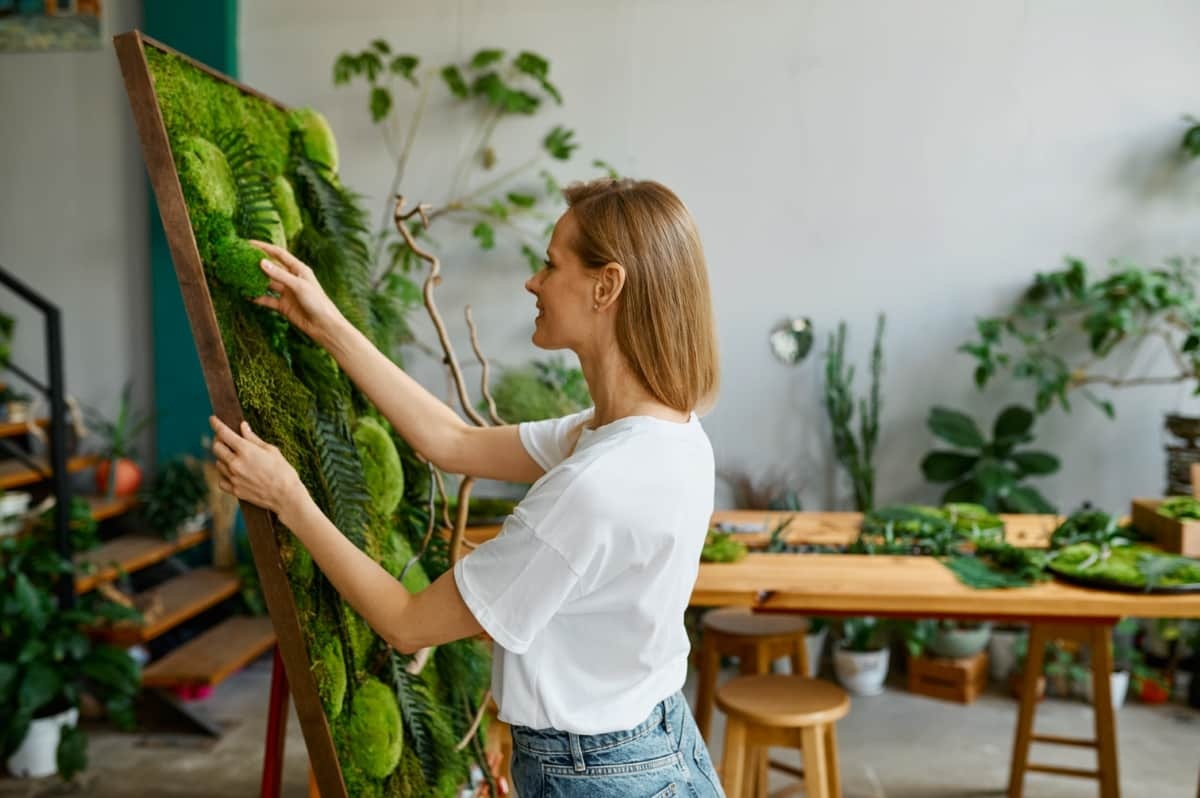Growing moss at home is an enchanting way to bring a piece of nature indoors, offering numerous benefits such as air purification and aesthetic appeal. This guide will explore how to grow moss in a container, on stone, and even without existing moss. We’ll delve into methods like using buttermilk or yogurt and how to grow moss from dried moss or seeds.

For those wondering how to make moss grow faster or the benefits of growing moss indoors, this comprehensive article covers it all, ensuring you can successfully cultivate this serene greenery in your home environment.
How to Grow Moss at Home in 10 Steps
Understanding Moss Growth and Characteristics
Unlike many plants, moss lacks traditional roots, instead absorbing moisture and nutrients directly through its leaves. This characteristic makes it essential to understand the specific needs of moss, particularly its preference for consistent moisture and indirect light. Moss can grow on various surfaces, including soil, stone, and wood, adapting well to different textures. When learning how to grow moss, it’s crucial to recognize these fundamental growth patterns and characteristics, which will guide you in creating an ideal environment for your moss.
Selecting the Right Moss Species for Your Home Environment
Choosing the correct moss species is crucial for successful growth, as different types favor varying conditions. Some mosses thrive in moist, shaded areas, while others prefer dryer, sunnier spots. Studying the unique requirements of each moss species is essential for cultivating indoor moss successfully, ensuring proper light and moisture levels are provided. This step is particularly important if you’re interested in how to grow moss on stone or in a container, as these environments can have unique microclimates.
Creating the Ideal Growing Conditions for Moss
To grow moss successfully, it’s essential to replicate its natural habitat. This means maintaining a consistently moist environment, providing indirect or low light, and ensuring adequate air circulation. When learning how to grow moss indoors, consider using a spray bottle to keep the moss damp and placing it in a location that avoids direct sunlight. For those curious about how to grow moss on stone or in a container, ensure the stone or container surface stays moist and is positioned in a suitable location that mimics the moss’s natural setting.
Preparing the Growing Surface for Moss Establishment
Preparing the surface where you plan to grow moss is a crucial step. For those learning how to grow moss on stone or in a container, it involves ensuring the surface is clean and slightly rough to help the moss adhere. If you’re using soil, make sure it’s free of weeds and debris. This preparation is essential for moss to establish itself properly and begin growing. Whether you’re working with stone, wood, or soil, a well-prepared surface will significantly enhance the moss’s ability to thrive.
In case you missed it: How to Make Coconut Shell Charcoal for Plants: DIY at Home

Planting and Establishing Moss in Your Home Garden
The process of planting moss involves gently pressing it onto the prepared surface, whether that’s soil, stone, or in a container. If you’re starting with live moss, spread small patches evenly across the area. For those learning how to grow moss from dried moss, rehydrate it first by soaking it in water. The key is to ensure good contact between the moss and the surface. After planting, keep the area moist and provide the right light conditions to encourage growth. Regular misting is crucial in the early stages to help the moss establish itself.
Caring for Moss
Moss care is relatively straightforward but requires consistent attention. The primary focus is on maintaining moisture, as moss loves damp environments. Regular misting is essential, particularly if you’re trying to understand how to make moss grow faster. Prevent exposure to direct sunlight to protect the moss from drying out and potential damage. Additionally, suppose you’re exploring how to grow moss with yogurt or buttermilk. In that case, these methods can initially provide nutrients to kickstart growth, but ongoing care will mostly involve water and shade management.
Using Moss in Indoor Environments
Incorporating moss into indoor spaces can bring a sense of tranquility and a touch of nature indoors. When considering how to grow moss indoors, select a spot that receives indirect light and maintains a relatively stable temperature. Moss can be used in terrariums, as a decorative element on other houseplants, or even as a living art piece. The benefits of growing moss indoors include air purification and increased humidity, making it a practical and visually appealing addition to any room.
Incorporating Moss into Landscape Design
Moss works well in shady garden spots where other plants might struggle. When planning how to grow moss in a container or directly in the garden, consider using it as a ground cover or to create a lush green backdrop for other plants. Moss is also ideal for creating a natural woodland feel in your garden, adding texture and depth to the landscape.
In case you missed it: Best Practices to Grow Clove Beans in the Home Garden

How to Grow Moss from Seeds: Best Propagation
Growing moss from seeds can be a rewarding process. To start, mix moss seeds with a growing medium like soil and spread them over the prepared surface. Ensure that the environment remains damp and shaded, as moss seeds depend on a steady supply of moisture for successful germination and growth. Patience is key, as moss grown from seeds can take longer to establish than using live moss. However, this method allows for greater control over the growth and distribution of the moss in your garden.
How to Grow Moss in a Container
Growing moss in a container is an excellent way to enjoy this unique plant indoors or in small outdoor spaces. Select a container that has proper drainage and fill it with an appropriate substrate, such as peat or a soil mixture. After planting the moss, ensure the container is placed in a location with indirect light and is regularly misted to maintain moisture. Containers offer the flexibility to move the moss around to find the perfect growing spot.
How to Grow Moss with Buttermilk
Using buttermilk is a popular method for encouraging moss growth. Mix buttermilk with small pieces of live or dried moss in a blender to create a paste. Spread this paste over the surface where you want the moss to grow, such as on stones or in a container. The buttermilk provides nutrients that help the moss establish and grow. Keep the area moist and shaded for best results. This method is particularly effective for those wondering how to grow moss on stone.
How to Grow Moss at Home without Moss
For those interested in how to grow moss without moss, there are several methods. One popular approach is using yogurt or buttermilk as a growth medium. Mix either with water and spread it over the desired growing surface. This mixture creates an environment conducive to moss spores naturally present in the air, allowing them to settle and grow. While this method may take longer than starting with live moss, it’s a fascinating way to cultivate moss from scratch.
In case you missed it: How to Grow Holly Berries at Home: Propagation to Harvest

Conclusion
Growing moss at home, whether in a container, on stone, or directly in your garden, offers a unique and serene addition to your living space. By understanding the basic characteristics of moss and providing the right conditions, you can successfully cultivate this lush greenery.
- Feed Your Flock for Less: Top 10 Tips to Save on Chicken Feed
- Ultimate Guide to Ossabaw Island Hog: Breeding, Raising, Diet, and Care
- Hatching Answers: The Top 10 Reasons Your Chickens Aren’t Laying Eggs
- Eggs and Economics: Breaking Down the Cost of Raising Backyard Chickens
- Defend Your Greens: Proven Methods to Keep Iguanas Out of Your Garden
- Ultimate Guide to Cinnamon Queen Chicken: A Comprehensive Guide for Beginners
- Ultimate Guide to California Tan Chicken: Breeding, Raising, Diet, Egg-Production and Care
- Ultimate Guide to Marsh Daisy Chicken: Breeding, Raising, Diet, and Care
- 10 Types of Chicken Farming Businesses You Can Start for Profits